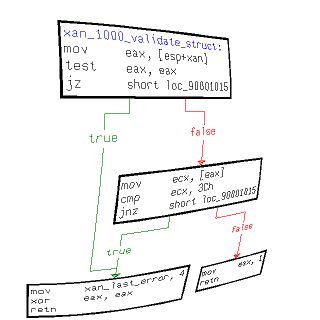In the time-honored tradition of avoiding real work, I made an extension to xine that will decode Origin’s Xan codec (FourCC: Xxan). This is despite my long-standing policy that I will not invest any effort into making open source programs leverage closed, binary code in order to decode data.

I have no intention of committing it to the xine codebase because, really, who cares? But let’s see MPlayer decode Xan data! Ha! Oh, why do I provoke them so? They’re going to have a workable decoder 20 minutes after I post this.
If you care, I posted the xine plugin code here: http://multimedia.cx/xan/. This is based on Mário Brito’s extensive Wing Commander research. It needs a very large table for decoding (128KB of data expressed in ASCII text) and that’s contained in xandata.h[.bz2]. Ideally, I think that table is supposed to be generated by some DLL function. Xan samples and the xanlib.dll are located at the MPlayer samples repository.
This particular plugin is based on one of my old reverse engineering experiments. The reason I took on this task is because loading xanlib.dll and calling into it isn’t especially difficult. At least, none of the relevant functions are dependent upon any external functions. Thus, I just used a few strategic mmap() functions and loaded the binary code directly into specific memory regions. Oh, the code only works on x86 architectures, of course.
